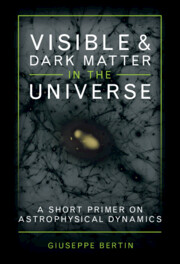Book contents
- Frontmatter
- Dedication
- Contents
- Preface
- Acknowledgements
- Part I Visible Matter
- 1 Light
- 2 Optical Astronomy
- 3 Radio Astronomy
- 4 X-Ray and Gamma Ray Astronomy
- 5 Astroparticle Physics, Gravitational Waves, and Space Physics
- Part II Dark Matter
- 6 Galaxies
- 7 The Supermassive Black Hole at the Center of the Milky Way
- 8 Two Precursors of the Problem of Dark Matter
- 9 The Discovery of Dark Halos around Spiral Galaxies
- 10 The Cosmological Context
- Index
3 - Radio Astronomy
Published online by Cambridge University Press: 08 December 2022
- Frontmatter
- Dedication
- Contents
- Preface
- Acknowledgements
- Part I Visible Matter
- 1 Light
- 2 Optical Astronomy
- 3 Radio Astronomy
- 4 X-Ray and Gamma Ray Astronomy
- 5 Astroparticle Physics, Gravitational Waves, and Space Physics
- Part II Dark Matter
- 6 Galaxies
- 7 The Supermassive Black Hole at the Center of the Milky Way
- 8 Two Precursors of the Problem of Dark Matter
- 9 The Discovery of Dark Halos around Spiral Galaxies
- 10 The Cosmological Context
- Index
Summary
The chapter starts with a brief description of some of the most important telescopes for radioastronomy, and the distinction between single-dish telescopes and radio interferometers (with special attention on the ALMA array, a very successful facility particularly in the study of protostellar and protoplanetary systems). The chapter then highlights some of the most important discoveries that radio astronomy has contributed. Special attention is given to the discovery of (1) the 21-cm neutral hydrogen line and its importance in the study of the rotation of spiral galaxies; (2) the Cosmic Microwave Background and the birth of modern cosmology; (3) pulsars, with specific discussion of binary pulsars and millisecond pulsars; (4) gravitational lensing, first observed in terms of multiple images of distant quasars, with some description of weak and strong lensing and the interesting measurement of time delays in relation to the determination of the Hubble constant. The discovery of pulsars interpreted as fast rotators prompts a final section, which is a digression on the interplay among density, shape, and rotation in self-gravitating systems.
Keywords
- Type
- Chapter
- Information
- Visible and Dark Matter in the UniverseA Short Primer on Astrophysical Dynamics, pp. 37 - 53Publisher: Cambridge University PressPrint publication year: 2022

